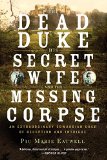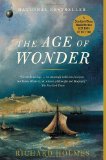Summary | Excerpt | Reviews | Beyond the book | Read-Alikes | Genres & Themes | Author Bio

Britain's Most Ineligible Bachelor and his Enlightened Quest to Train the Ideal Mate
by Wendy MooreStranger than fiction, blending tragedy and farce, How to Create the Perfect Wife is an engrossing tale of the radicalism, and deep contradictions, at the heart of the Enlightenment.
Thomas Day, an 18th-century British writer and radical, knew exactly the sort of woman he wanted to marry. Pure and virginal like an English country maid yet tough and hardy like a Spartan heroine, she would live with him in an isolated cottage, completely subservient to his whims. But after being rejected by a number of spirited young women, Day concluded that the perfect partner he envisioned simply did not exist in frivolous, fashion-obsessed Georgian society. Rather than conceding defeat and giving up his search for the woman of his dreams, however, Day set out to create her.
So begins the extraordinary true story at the heart of How to Create the Perfect Wife, prize-winning historian Wendy Moore's captivating tale of one man's mission to groom his ideal mate. A few days after he turned twenty-one and inherited a large fortune, Day adopted two young orphans from the Foundling Hospital and, guided by the writings of Jean-Jacques Rousseau and the principles of the Enlightenment, attempted to teach them to be model wives. After six months he discarded one girl, calling her "invincibly stupid," and focused his efforts on his remaining charge. He subjected her to a number of cruel trials - including dropping hot wax on her arms and firing pistols at her skirts - to test her resolve but the young woman, perhaps unsurprisingly, eventually rebelled against her domestic slavery. Day had hoped eventually to marry her, but his peculiar experiment inevitably backfired, though not before he had taken his theories about marriage, education, and femininity to shocking extremes.
Stranger than fiction, blending tragedy and farce, How to Create the Perfect Wife is an engrossing tale of the radicalism, and deep contradictions, at the heart of the Enlightenment.
Sometimes truth really is stranger than fiction. That's certainly the case with the story Wendy Moore tells in How to Create a Perfect Wife: Britain's Most Ineligible Bachelor and His Quest to Train the Ideal Mate. Moore combines engaging storytelling with exhaustive and impressive research as she brings to life the misadventures of the eighteenth-century gentleman Thomas Day...continued
Full Review
(674 words)
This review is available to non-members for a limited time. For full access,
become a member today.
(Reviewed by Norah Piehl).
 Wendy Moore illustrates the various cultural influences that led to Thomas Day's peculiar experiment. Among these are the Pygmalion myth (later popularized in George Bernard Shaw's play by that name, as well as the musical, My Fair Lady, based on Shaw's play) and, perhaps most influentially, Jean-Jacques Rousseau's book, Emile, or On Education. First published in 1762, the educational treatise uses novelistic conventions (such as character and plot) to illustrate Rousseau's theories on the best way for the individual to retain innate goodness while still participating as a functioning member of society. It's divided into five parts, beginning with very young childhood and eventually exploring the ideal route for the individual to choose a ...
Wendy Moore illustrates the various cultural influences that led to Thomas Day's peculiar experiment. Among these are the Pygmalion myth (later popularized in George Bernard Shaw's play by that name, as well as the musical, My Fair Lady, based on Shaw's play) and, perhaps most influentially, Jean-Jacques Rousseau's book, Emile, or On Education. First published in 1762, the educational treatise uses novelistic conventions (such as character and plot) to illustrate Rousseau's theories on the best way for the individual to retain innate goodness while still participating as a functioning member of society. It's divided into five parts, beginning with very young childhood and eventually exploring the ideal route for the individual to choose a ...
This "beyond the book" feature is available to non-members for a limited time. Join today for full access.

If you liked How to Create the Perfect Wife, try these:

The Dead Duke, His Secret Wife, and the Missing Corpse
by Piu Marie Eatwell
Published 2016
One of the most notorious and bizarre mysteries of the Edwardian age, for readers who loved The Suspicions of Mr. Whicher

by Richard Holmes
Published 2010
A riveting history of the men and women whose discoveries and inventions at the end of the eighteenth century gave birth to the Romantic Age of Science.
Heaven has no rage like love to hatred turned, Nor hell a fury like a woman scorned.
Click Here to find out who said this, as well as discovering other famous literary quotes!